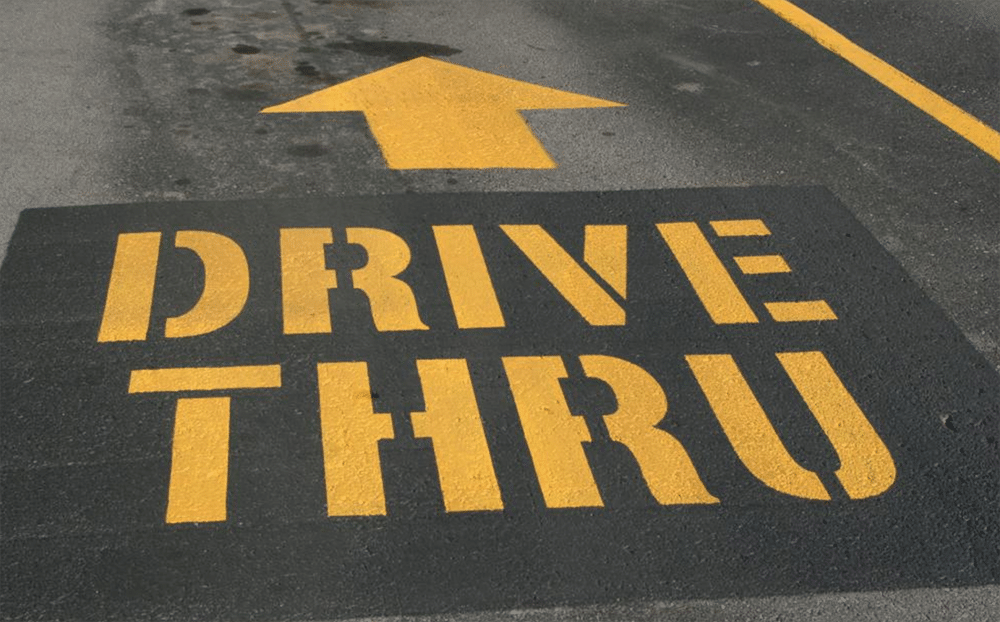
Each week here at the Australian Writers’ Centre, we dissect and discuss, contort and retort, ask and gasp at the English language and all its rules, regulations and ridiculousness. It’s a celebration of language, masquerading as a passive-aggressive whinge about words and weirdness. This week we’re through with thru!
Q: Hi AWC, we got an email from Steph last week – she’d like to know when to use “thru” and when to use “through” and if they mean the same thing. So?
A: Was she in a drive-thru when she wrote that email?
Q: Unsure. Let’s go with no.
A: And she’d like us to go through the options for her?
Q: Yes that’s righ— oh, I see what you’re doing. You’ve just used them each in a sentence. But wait, that’s still not very helpful.
A: True. First things first – “through” is the only one you should ever use for formal writing. No exceptions.
Q: Wow, this is an early call. But I always thought it would win through.
A: “Through” is Germanic in origin, originally relating to “door”. But its current spelling has lasted since the 13th century.
Q: Wow. That’s an old word. But what about “thru”?
A: “Thru” does mean the same thing as the preposition “through”, with its simplified spelling arriving in the 1800s. It’s simply a space-saving version of “through” – reserved for only a few uses.
Q: Such as “drive-thru”, right?
A: That’s right. Basically it’s used on signs to save on space. Although “drive-thru” has become more of its own idiom by this stage.
Q: There’s usually an idiom in front of me at the drive-thru, that’s for sure.
A: Did you know the first drive-thru restaurant was in 1947? But the name wasn’t shortened like that until 1949.
Q: Wow, nope. I guess it had a big golden M?
A: No way – they weren’t even around then and didn’t get a drive-thru until 1975.
Q: You’re full of fun facts. I’m lovin’ it.
A: Anyway, you may have heard through the grapevine that MacquarieDictionary lists “thru” as a form of “through” – they suggest it’s often used in advertising. But unless it’s some trademarked product feature, we really think it’s only acceptable for signs like “drive-thru” or “no thru traffic”.
Q: But why doesn’t “no throughfare” get shortened to “no thru fare”?
A: Actually, those signs say “no thoroughfare” – a thoroughfare being a road or main route. Just as a thoroughbred is typically a racehorse.
Q: You’re blowing my mind here. So musician George Thoroughgood is a horse?
A: No. And it’s George Thorogood.
Q: So Mr Ed isn’t Ed Sheeran then?
A: You may want to lay off the bourbon, scotch and beer.
Q: Okay. But “thru” can also be used in a text message these days, right?
A: Well, yes, social media has done that to most words. So when Alice goes through the (see-through) Looking Glass, she might receive a text from the White Rabbit asking “Yo, u thru yet? Hop 2 it, we r L8…”
Q: Side question. Does it matter if “see-through” is without a hyphen?
A: Keep the hyphen. It helps in a situation like “the Emperor could see through their plan to make see-through clothes”.
Q: But they didn’t make any clothes for the Emperor. He was naked the whole time! Oh sorry, spoilers.
A: Anyway, as a final run-through – only use “thru” for informal, promotional or space saving writing (e.g. texting or sign writing). “Through” should see you through for everything else.
Q: Thanks for the thorough food for thought from the knowledge trough. It threw up a few issues, but I’m glad we pulled through with the goods. This topic has been covered, through and through.
A: It’s probably time to shoot through though, right?
Q: Yes. Drive-thru sounds good right about now…
If you have a grammar gripe or punctuation puzzle that you’d like our Q&A to explore, email it to us today!
About us
Contact us